![]()
![]()
![]()
Use LEFT and RIGHT arrow keys to navigate between flashcards;
Use UP and DOWN arrow keys to flip the card;
H to show hint;
A reads text to speech;
44 Cards in this Set
- Front
- Back
|
distance formula
|
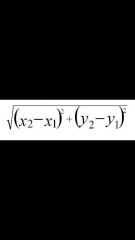
|
|
|
midpoint formula
|
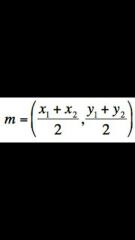
|
|
|
slope formula
|

|
|
|
horizontal line's slope equals
|
zero
|
|
|
vertical line's slope is
|
undefined
|
|
|
parallel lines' slopes are
|
equal
|
|
|
perpendicular lines' are
|
opposite reciprocals
|
|
|
standard form
|
Ax + By = C
|
|
|
point-slope form
|

|
|
|
slope-intercept form
|
y = mx + b
|
|
|
how do you find x-intercepts?
|
set y = 0 and solve for x
|
|
|
how do you find the y-intercept?
|
set x= 0 and solve for y
|
|
|
how do you find x-axis symmetry?
|
change your y to a negative, if it's the same as the beginning equation, you have x-axis symmetry.
|
|
|
how do you find y-axis symmetry?
|
change your x to a negative, if it's the same as the beginning equation, you have y-axis symmetry.
|
|
|
how do you find origin symmetry?
|
change your x and your y to a negative, if it's the same as the beginning equation, you have origin symmetry.
|
|
|
standard equation of a circle
|
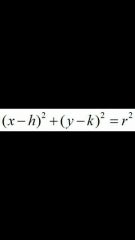
|
|
|
general form of a circle
|

|
|
|
find domain
|
if you have a denominator, take the number that x cannot be equal to. linear equations have no restrictions (negative infinity, infinity)
|
|
|
difference quotient
|
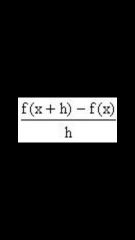
|
|
|
vertical line test
|
if every vertical line that intersects a graph does so exactly once, then the graph represents a function
|
|
|
vertical asymptote
|
simplify the rational expression, if possible, and then set the denominator equal to zero and solve
|
|
|
horizontal asymptotes
|
•If the degree of the numerator is less than the degree of the denominator then y equals 0 is the asymptote.
• if the degree of the numerator is equal to the degree of the denominator then the horizontal asymptote is equal to the leading coefficient of the numerator divided by the leading coefficient of the denominator. • if the degree of the numerator is greater than the degree of the denominator then there is no horizontal asymptote. (DNE = does not exist) |
|
|
(f+g)(x) =
|
f(x)+g(x)
|
|
|
(f-g)(x) =
|
f(x)-g(x)
|
|
|
(f•g)(x) =
|
f(x)g(x)
|
|
|
(f/g)(x) =
|
f(x)/g(x)
|
|
|
(f ° g)(x) =
|
f(g(x))
|
|
|
(g ° f)(x)
|
g(f(x))
|
|
|
horizontal line test
|
If every horizontal line intersects the graph of a function does so exactly once the function passes the horizontal line test and is a one to one function.
|
|
|
find the inverse of a one to one function
|
1) replace f(x) with y
2) interchange the variables 3) solve the resulting equation for y, if possible 4) replace y with f^-1(x) |
|
|
quadratic function
|
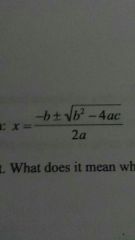
function
|
|
|
vertex formula
|

formula
|
|
|
compound interest formula
|
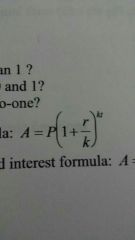
|
|
|
Continuously compounded interest formula
|
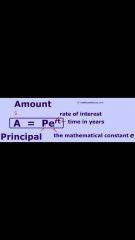
|
|
|
Population growth formula (Malthusian model)
|
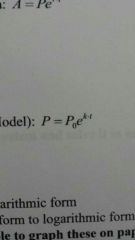
|
|
|
Permutation and combination formulas
|
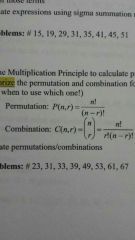
|
|
|
Discriminant
|

|
|
|
What does it mean when your discriminant equals 0?
|
One repeated rational root
|
|
|
What does it mean when your discriminant is positive and a perfect square?
|
Two different rational roots
|
|
|
What does it mean when your discriminant is positive and not a perfect square?
|
Two different irrational roots
|
|
|
What does it mean when your discriminant is negative?
|
No real roots
|
|
|
What is a complex number?
|
A complex number is a number that can be written in the form a + bi where A is the real part, and B is the imaginary part.
|
|
|
powers of i
|
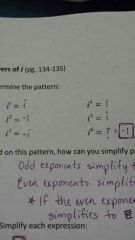
|
|
|
How can you simplify powers of i?
|
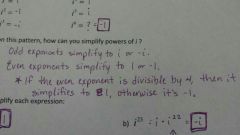
|

